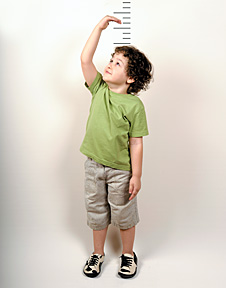Growing Bodies: Pediatric Musculoskeletal Injuries in Children
By Dr. Deborah Pate
Do you know that children's musculoskeletal systems are different than adults? That's because children's bones are continually growing. You might not think too much of that fact, but
Dr. Deborah Pate explains why it's so important, particularly in terms of your child's risk of suffering an injury during athletic activity.
Physical activity is extremely important for everyone, but especially for children. A well-designed exercise program enhances their physical and intellectual development. Competitive sports are often a child's first introduction to programmed exercise, and in the past decade, there has been an increase in the number of children participating in team and solo sports. Younger children are allowed to participate in sports for enjoyment, health and personal development. This balance changes as competitive elements become more dominant and subsequently young athletes train harder and longer and practice a sport throughout the whole year. Consequently, with increased participation and increased physical demands have come increased sports-related injuries.
Growing Bone vs. Mature Bone
 Children's musculoskeletal systems are different from adults. To understand pediatric injuries that involve the musculoskeletal system, it's important to be aware of the differences between children and adults in this regard. The main difference is that children's bones are growing; adults' bones have stopped growing. This bone growth happens in two ways - by growing lengthwise and widthwise. The bone grows lengthwise in an area at the ends of the bones called the epiphyseal plate or growth plate, in the region known as the metaphysis. The widthwise growth occurs on the surface of the bone.
Children's musculoskeletal systems are different from adults. To understand pediatric injuries that involve the musculoskeletal system, it's important to be aware of the differences between children and adults in this regard. The main difference is that children's bones are growing; adults' bones have stopped growing. This bone growth happens in two ways - by growing lengthwise and widthwise. The bone grows lengthwise in an area at the ends of the bones called the epiphyseal plate or growth plate, in the region known as the metaphysis. The widthwise growth occurs on the surface of the bone.
Growing bone has inherent areas of weakness due to the growth process. In fact, children's tendons and ligaments are relatively stronger than the growth plate; therefore, with severe trauma the growth plate will give way before the ligament. On the other hand, children's bones and muscles are more elastic and heal faster compared to adults.
Growing Bone Means Unique Injury Risks
Due to the differences in growing bone, the patterns of injuries are different from mature bone. There are two main types of bone injuries: one is an acute injury in which violent forces are applied at one time; the second is from chronic, recurring stresses applied to the bone over a prolonged period of time. Growth plate injuries can cause cessation (stoppage) of growth of the bone, resulting in limb-length discrepancy, angular deformity or altered joint mechanics; possibly causing permanent disabilities. The chronic recurring stresses are often termed overuse syndromes, but also include stress fractures which can lead to changes that affect the joints, causing early arthritic changes. Stress fractures, if not managed correctly, can result in complete fracture.
 Adolescents who are in the peak period of linear growth - often termed a growth spurt - are most vulnerable because of imbalances in strength and flexibility and changes in the biomechanical properties of bone. Sports involving contact and jumping have the greatest injury risk. Most chiropractors who treat pediatric patients are aware of these injuries and the potential causes related to the growing musculoskeletal system. They have been uniquely trained to understand the musculoskeletal system, making them excellent resources for the management of sports-injuries.
Adolescents who are in the peak period of linear growth - often termed a growth spurt - are most vulnerable because of imbalances in strength and flexibility and changes in the biomechanical properties of bone. Sports involving contact and jumping have the greatest injury risk. Most chiropractors who treat pediatric patients are aware of these injuries and the potential causes related to the growing musculoskeletal system. They have been uniquely trained to understand the musculoskeletal system, making them excellent resources for the management of sports-injuries.
Red Flags: Is Your Child at Risk for a Severe Injury?
There are particular conditions that preclude children from participating in contact sports; specifically children with developmental issues or handicaps (and who may even be involved in activities such as the Special Olympics). Children with disabilities should participate in sports if at all possible, but there are a few structural problems that should not be ignored. Children who have been diagnosed with Down syndrome, rheumatoid arthritis and upper cervical anomalies should be carefully evaluated. Down syndrome patients have a high incidence of atlanto-axial (cervical) instability - reportedly up to 30 percent. Children with rheumatoid arthritis are also at increased risk for spinal cord injury in contact sports because of an increased incidence of cervical (neck) instability.

